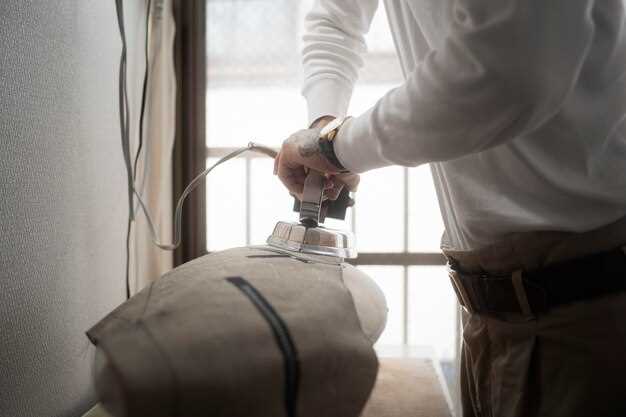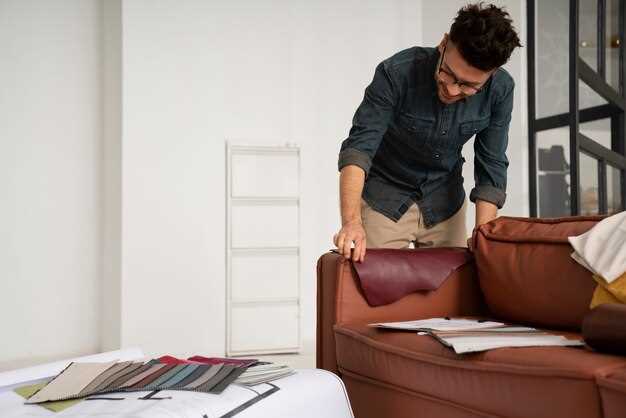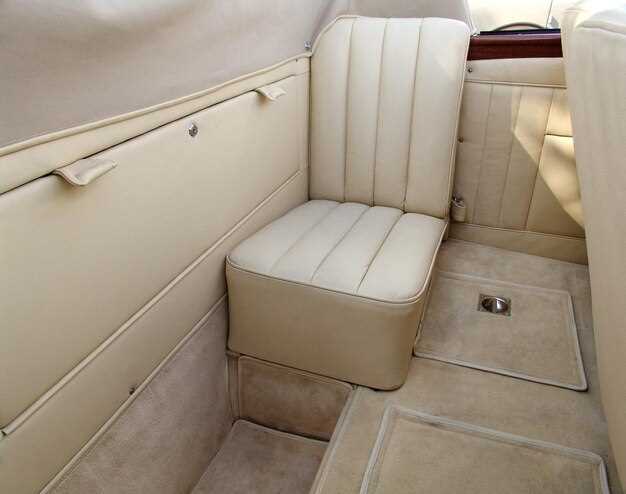
When it comes to maintaining your marine vessel, one of the most impactful yet often overlooked aspects is the condition of the cushions. Over time, exposure to the elements can lead to wear and tear, fading, and even mold on your boat’s upholstery. Reupholstering your boat cushions not only enhances the aesthetic appeal of your vessel but also ensures comfort during your marine excursions.
This step-by-step guide is designed to help boat owners through the process of reupholstering cushions effectively and efficiently. Whether you are a seasoned DIY enthusiast or a first-time boat owner, you will find valuable insights and practical tips that will simplify the task ahead. Investing your time in this project can yield significant improvements in the look and feel of your boat, making your time on the water much more enjoyable.
In the following sections, we will explore the necessary tools, materials, and techniques required for successful reupholstering. From selecting marine-grade fabrics to the precise measurements and cutting strategies, each step will be thoroughly explained. With this guide, you will be equipped to breathe new life into your boat cushions and create a welcoming atmosphere for both you and your guests.
Choosing the Right Marine Fabric for Durability and Style

Selecting the appropriate marine fabric is crucial for reupholstering boat cushions, as it impacts both the longevity and aesthetic appeal of your cushions. Here are factors to consider when choosing marine fabric:
- Water Resistance: Look for fabrics specifically designed to repel water. Vinyl and coated fabrics are excellent choices for their high levels of moisture resistance.
- UV Protection: Marine environments expose fabrics to intense sunlight. Select materials with built-in UV protection to prevent fading and degradation over time.
- Mildew Resistance: Opt for fabrics treated to resist mildew growth. This is essential in a moist environment to maintain a clean and healthy cushion.
- Durability: Check the fabric’s weight and thickness. Heavier materials often provide better durability and withstand wear and tear more effectively.
- Colorfastness: Ensure that the fabric retains its color under sun exposure. Look for options that boast high color fastness ratings.
- Texture and Comfort: Consider the texture of the fabric. A smooth surface is generally easier to clean and more comfortable for seating.
- Ease of Maintenance: Choose fabrics that are easy to clean and maintain. Some marine fabrics can be wiped down easily, while others may require special cleaning agents.
Popular types of marine fabrics include:
- Acrylic Fabric: Known for its color retention and UV stability.
- Solution-Dyed Polyester: Offers excellent fade resistance and durability.
- Vinyl: Highly water-resistant and easy to maintain, but may lack breathability.
Ultimately, the right marine fabric should balance both durability and style, complementing your boat’s interior while withstanding the rigors of the marine environment.
Measuring and Cutting Foam for Perfect Fit

Achieving the perfect fit for your boat cushions begins with accurate measurements. To start, remove the existing foam from the cushion covers carefully to use as a reference. If the original foam is not available, measure the dimensions of the cushion area. Use a tape measure to get the length, width, and thickness of each cushion, ensuring to measure in multiple spots to account for any inconsistencies.
Once you have the measurements, it’s essential to choose the right type of marine foam. Consider options like high-density foam, which offers durability and comfort while being resistant to water and mildew. When selecting foam, remember to factor in the intended use of the cushions. For seating areas, thicker foam provides more support, whereas a thinner option may suffice for back cushions.
To cut the foam accurately, use a sharp utility knife or an electric knife, which makes the process easier and cleaner. Before cutting, lay the foam on a flat surface and mark the dimensions using a straight edge and a marker. Always double-check your measurements to prevent waste. When cutting, apply steady pressure and follow the marked lines closely for a straight edge.
After cutting, it’s a good idea to do a dry fit of the foam inside the cushion covers. This allows you to check the fit and make any necessary adjustments. If the foam is slightly large, you can trim it down further, while any small gaps can be addressed with extra fabric or wedging material. Properly measuring and cutting the foam is crucial to ensure that your cushions not only look great but also provide the necessary comfort and support out on the water.
Techniques for Attaching Fabric Securely to Boat Cushions
Attaching fabric securely to boat cushions is vital for ensuring durability and comfort during use. The right techniques will not only enhance the appearance of the cushions but also protect them from the harsh marine environment.
One effective method is to use a staple gun. Select stainless steel staples designed for marine applications to prevent rust and corrosion. Begin by laying the fabric over the cushion, ensuring that it is evenly aligned. Pull the fabric taut and start stapling from the center, moving outward to prevent any wrinkling. This approach helps to achieve an even tension across the fabric, which is essential for a professional finish.
For extra strength, consider using a marine-grade adhesive in conjunction with staples. Apply the adhesive to the cushion’s surface before placing the fabric. This provides an additional layer of security and helps to keep the fabric in place, especially in areas prone to wear and tear.
Another technique involves sewing the fabric to the cushion’s edges. Use a heavy-duty thread that can withstand exposure to moisture and UV rays. A sewing machine may be used for this, or you can opt for hand stitching if precision is needed in detailed areas. This method offers a clean look while ensuring that the fabric remains attached even under strenuous conditions.
For cushions that require a removable cover, utilizing zippers is an excellent solution. Install a marine zipper along one edge of the cushion, allowing for easy access and cleaning. Ensure that the zipper is well-secured and aligned correctly to prevent any fabric from slipping out of place.
Lastly, consider using Velcro strips on the underside of the fabric and the cushion. This allows for flexibility in removing the fabric for washing or replacement. When using Velcro, make sure it is marine-rated to endure constant exposure to water and humidity.
By implementing these techniques, you can ensure that the fabric on your boat cushions is attached securely, providing comfort and longevity on the water.



